Addressing the basic human needs of safe drinking water, sanitation and good hygiene, HCL Samuday aims to ensure completely clean villages with access to clean drinking water for everyone. The focus here is on taking care of both infrastructure and behaviour change related issues.
Working on the human emotional facets of disgust, pride, need, relevance, and ease, the Community-Led Total Sanitation strategy has been adopted for motivating households to build and use toilets. Alongside, an Open Defecation Elimination Plan for the villages is developed and executed in close coordination with local government officials. For making clean drinking water available and accessible to all, wherever possible, chlorination of functional hand pumps is carried out. This is complemented by development of piped drinking water supply system by facilitating construction of Over-Head Tanks in collaboration with the local community.
Key Interventions
- Sanitation
- Clean Drinking Water
- Solid Waste Management (SWM)
- Liquid Waste Management (LWM)
Sanitation
Eradication of open defecation in a one-point agenda under this intervention. This is being pursued by following the Community-Led Total Sanitation (CLTS) approach. Here, community / gram panchayats (GP) are sensitized through IEC/BCC for adopting safe sanitation practices, followed by mobilization of households, capacity building of masons and advocacy with government at various levels. Creating awareness regarding benefits of toilets construction, living standards are being improved by first explaining and then subsequently breaking the oral-faecal route, thereby leading to reduction in diseases like diarrhoea, jaundice, etc.

Gaurav Yatra Celebrations

Gaurav yatra Celebrations

Felicitation of Nigrani Samiti Members

Felicitation of Nigrani Samiti Members
Operationally, the process starts with survey of a GP, which helps in grounded strategy development. Next activity called triggering results in formation of a local citizen group known as Nigrani Samiti. HCL Samuday then facilitates and supports this citizen group in leading its panchayat towards freedom from open defecation by planning and carrying out various activities, including strict follow-up. Such collaborative efforts have managed to make 83 GPs Open Defecation Free (ODF) with many more at various stages of development, more than 67, 000 households in the project area have access to Individual Household Toilets (IHHT).
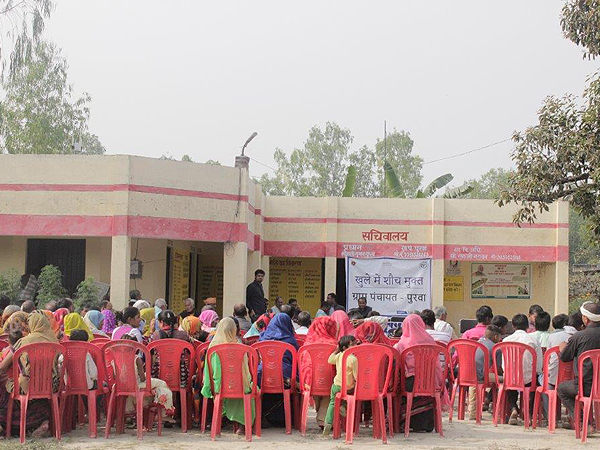
Community Participation during ODF declaration

Gaurav Yatra

Gaurav Yatra

Wall paintings of List of HHS with access to toilets
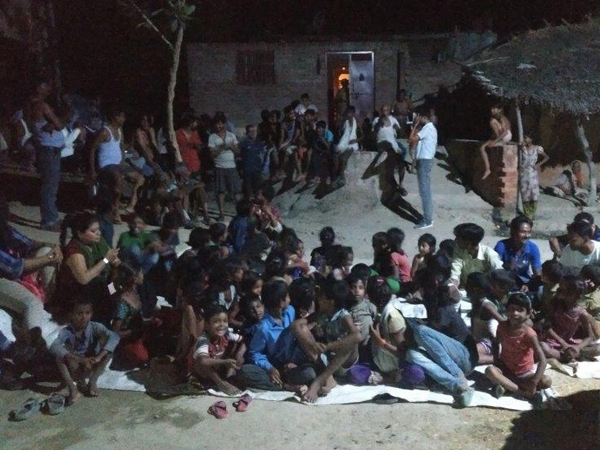
Night Chaupal

Gaurav Yatra

Wall paintings on Toilet
Clean Drinking Water
Water scarcity is a global problem which needs to be dealt with utmost care and on priority. Quality, management, and supply are critical to water security. Clean Drinking Water intervention makes households water secure by developing either (i) Over head tank based supply system; or (ii) Direct pumping based supply system, depending on suitability in a particular geography. The schemes are wholly owned and managed by community through Water User Groups. These groups collect community capital cost contribution and look after operations & maintenance of the system for robust management of the water supply scheme.

Barauli Overhead tank
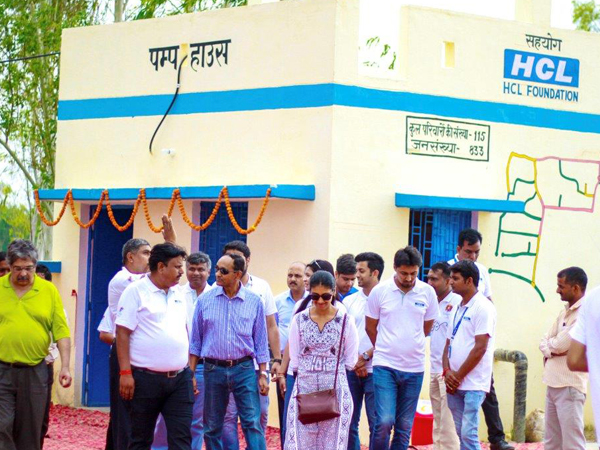
Inaugration of water Sites
With 6 operational sites and 17 others in various stages of completion, the community is experiencing benefits of piped drinking water supply.

Kashai pic- People having access to water through tap

VWSC meetings

Capacity Building training of VWSCs

VWSC meeting
Solid Waste Management (SWM)
The heterogeneous nature of waste and ways to treat them pose a challenge which is complex not only because of the quantum generated but also because of the variable nature of it. SWM intervention involves end to end management of the solid waste being generated in villages. It involves collection, storage, transportation, processing, and disposal of solid waste in a way that best addresses the issues of public health, environment conservation, and aesthetic beauty.

Door to Door Waste Collection
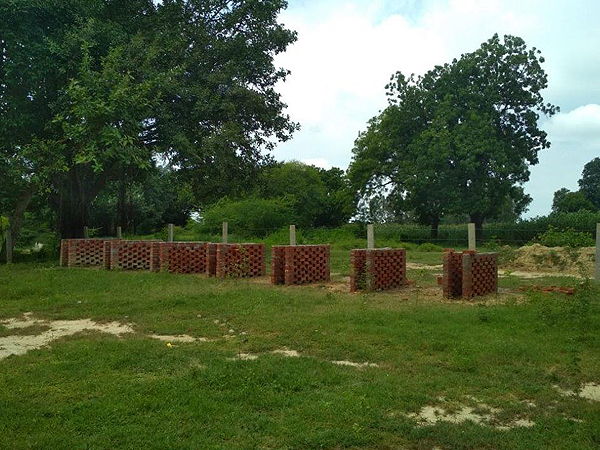
Prepration of composting Unit

Door to Door Waste Collection
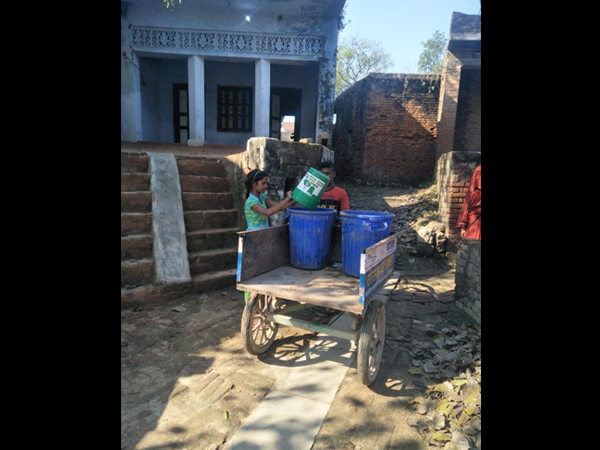
Door to Door Waste Collection
Under this intervention, solid waste collected from the doorsteps is further segregated and stored in designated infrastructure created at village level. Enabling participatory management, a Samiti has been formed in every gram panchayat which has a unique bank account where monthly tariff collection gets deposited. Along with regular door to door (D2D) collection from 10,500 households (HH), community is imparted knowledge for suitable management of wet and animal waste at home. Through this intervention, so far almost 600 Tonnes of solid waste has been handled and 237 Tonnes of compost produced.

Segragation of Collected Waste
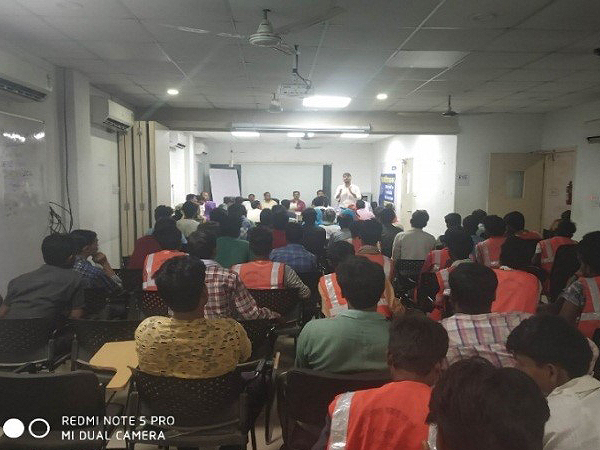
Training of Waste collector

Cleanliness drive
Liquid Waste Management (LWM)
Carrying forward the objective, under WASH, of establishing cleanliness in villages, the LWM intervention is aimed at management of liquid waste generated in the village. As there is no chemical contamination in the water in project area, only grey water exists as liquid waste. It presents the possibility of being locally treated and channelized through soak pits, filtration units, and refurbishment/construction of drains.

View of Pond before implementing Duckweed technology

Implentation of Duch weed technology

View of Pond after Implementation of Duckweed Technology
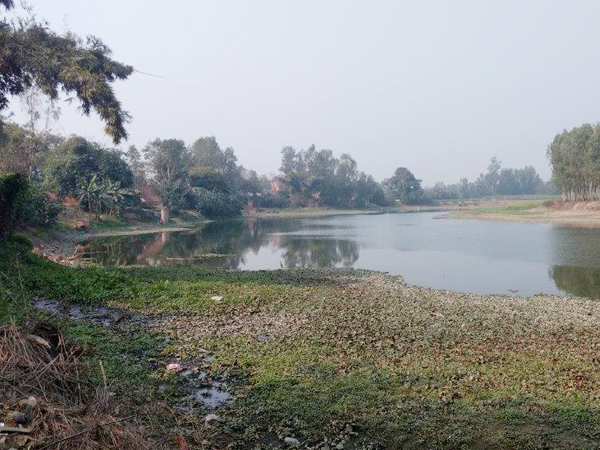
View of Pond after Implementation of Duckweed Technology
The intervention has been designed to provide sustainable, low cost, low maintenance requiring systems to (i) tap all the wastewater generated in the village catchment area and (ii) divert it to the village ponds. This not only leads to a cleaner and disease-free environment but also helps in recharging of ground water because the ponds serve as water holding units for recharge. Thus far, 6 sites for holistic LWM have developed. This has been supported with construction of 86 soak pits and 8 Km drainage.
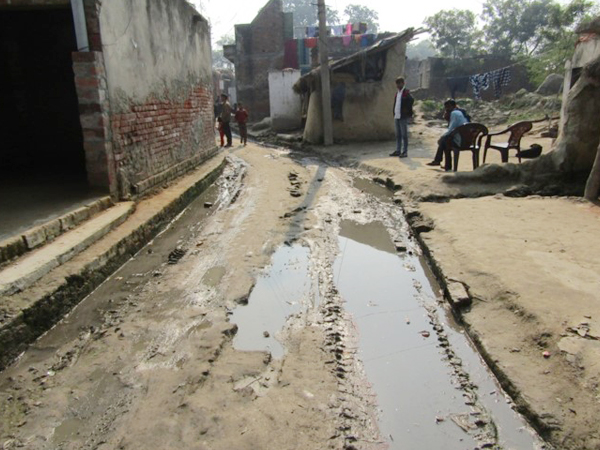
Condition of village before construction of drain/p>

Condition of village after construction of drain

Soak pit prepration

Community imvolvement during soakpit prepration

Soak pit prepration

Soak pit prepration